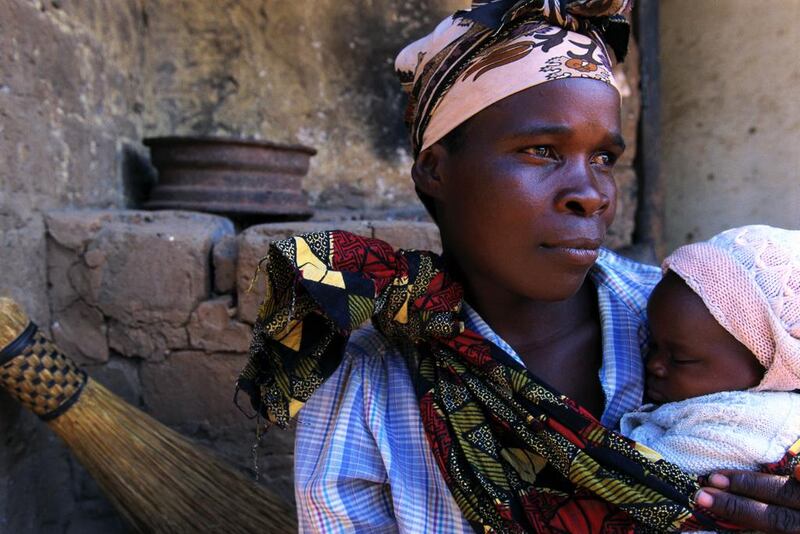Writing in this newspaper, Rafia Zakaria made a common, yet inaccurate, case for cash transfers over the livestock transfers made by Heifer International and similar organisations (To help the poor, rich countries should offer them cash, not cows, January 25). Her basic claim is this: organisations give in-kind gifts because they do not trust the poor to make good use of the cash alternative, and that nonprofit organisations should wholly replace assets with cash.
There are many good things to be said about cash transfers in certain circumstances, such as following a natural disaster or for resettling refugees — in other words, when aid is needed, and when the goods and services needed are locally available.
But cash alone will never address the root causes of poverty because extreme poverty is not simply the absence of cash. If it were that easy, the more than $441 billion a year in remittances sent to developing countries would have solved poverty already. Remittances certainly are an important source of income, but my point is that even huge infusions of cash have yet to permanently end poverty.
It’s a false accusation that the primary reason for not giving cash is concern over how recipients will spend it. At Heifer International, we have had success in providing unconditional cash transfers following disasters, such as the 2015 earthquake in Nepal. But our mission is to end hunger and poverty, not to temporarily ameliorate it. Discrimination, marginalisation and inequality, as well as a lack of education, health care and jobs, cannot be solved with cash, even if it looks more cost-effective on the surface.
In her article, Zakaria states: “One crucial caveat is that the people being helped must actually need cash and not something else.” She adds that “solutions that defy market solutions, such as building institutions, cannot be provided with cash”.
These caveats are precisely what we aim to address. Our programmes respond to the demand of our participants. They want high-quality livestock, training in how to maximise their farms for production and profit and access to markets that won’t exploit them. These needs cannot be met with cash alone.
Data supports our model, too. In 2016, researchers from the University of Illinois found that families living in extreme poverty in the Copperbelt Province of Zambia who received livestock donations and training experienced increases in their income, consumption levels and food security quickly and over the long term.
In 2011, Western Michigan University researchers found that for each $1 spent by Heifer in Albania, Nepal and Uganda, families had income gains of $2.35, $1.19 and $1.25 per year, respectively, and total asset gains of $3.37, $3.18 and $2.81, respectively. By contrast, in an article in the Stanford Social Innovation Review, Kevin Starr and Laura Hattendorf profiled a cash transfer programme in Uganda that gave grants to Ugandan youth in exchange for a business plan. When calculated for three-year gains, the cost effectiveness of that programme was only $1.03 for every $1 of grant money received.
We aren’t worried that recipients will spend cash on “temptation goods”. Rather, we are addressing the root causes of the problems our participants report. They can’t afford high quality livestock. Improved breeds and artificial insemination materials aren’t consistently available. They haven’t been trained in animal welfare or environmentally sensitive animal husbandry. They don’t have access to veterinarians. They are struggling to adapt to farming in the face of climate change.
When our participants follow our animal management practices, cows, for example, can produce up to 15 litres of milk a day compared to one litre produced per day by local breeds. Of course, there is a cost associated with improved livestock and the training we provide, but the benefits carry forward for generations as farmers pass on their knowledge, not to mention the passing on of livestock offspring. Additionally, the biggest hurdle for poor farmers to surmount is often a lack of access to markets. We help farmers create farmer-owned cooperatives and link them to markets where they can collectively bargain for better prices and share the costs of getting to market.
I would also like to turn the tables on the discussion and ask why self-reliance is not being considered as a measure of success for cash transfers. Children’s diets can certainly improve when their families are given cash. But how long can those improvements be sustained when the community is underdeveloped? Does giving a family $1,000 mean that the seven-year-old daughter will still be receiving adequate nutrition when she is of childbearing age? That’s research I would like to see.
Continually pitting cash against cows is unproductive. There are times when cash transfers are more appropriate, and times when livestock is the most fitting gift we can give. Donors must examine what effect they wish to make and give accordingly. But disparaging organisations such as Heifer International to make the case for giving cash does nothing to benefit people living in extreme hunger and poverty.
Pierre Ferrari is president and CEO of Heifer International, a global nonprofit working to end hunger and poverty and care for the Earth





